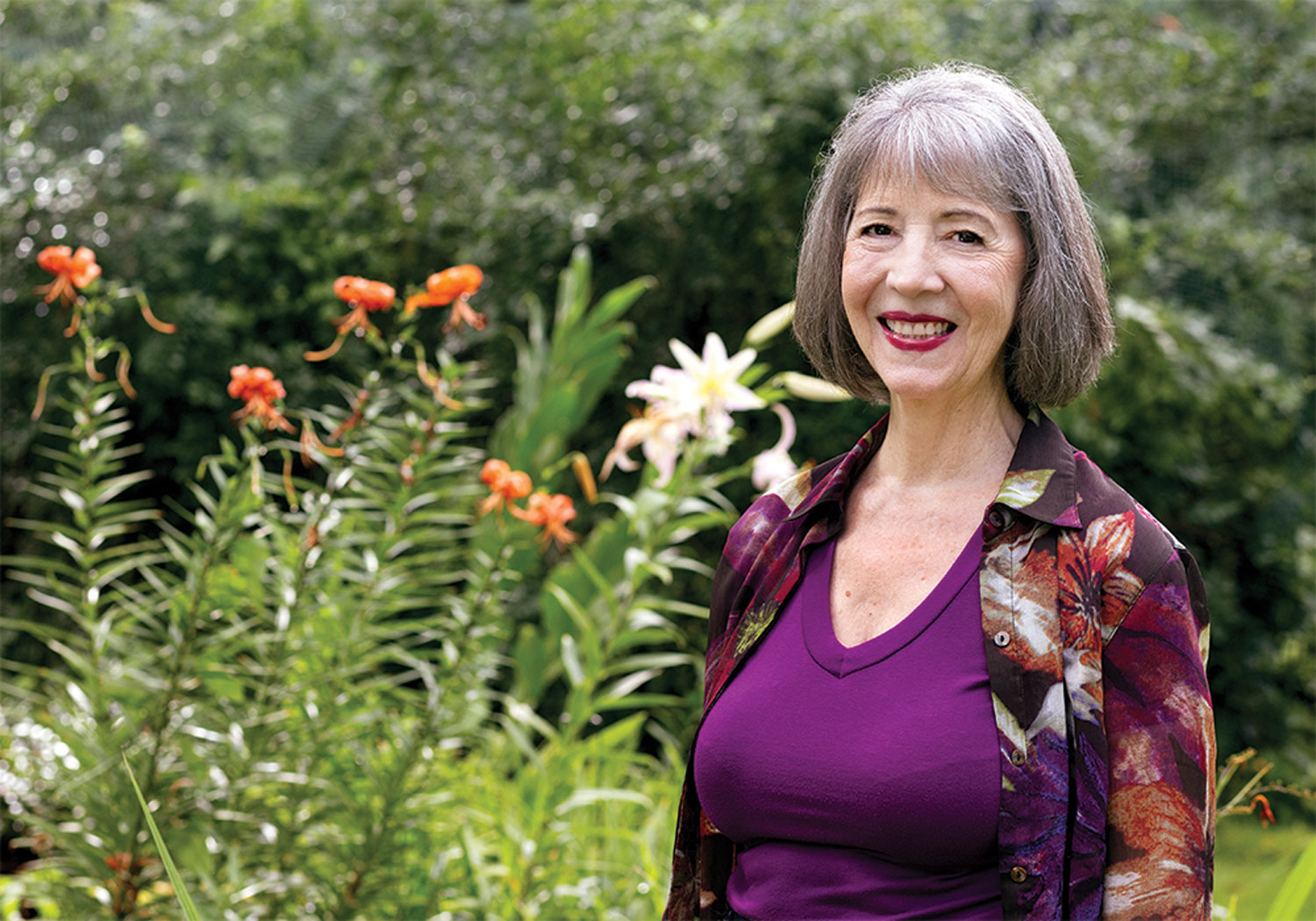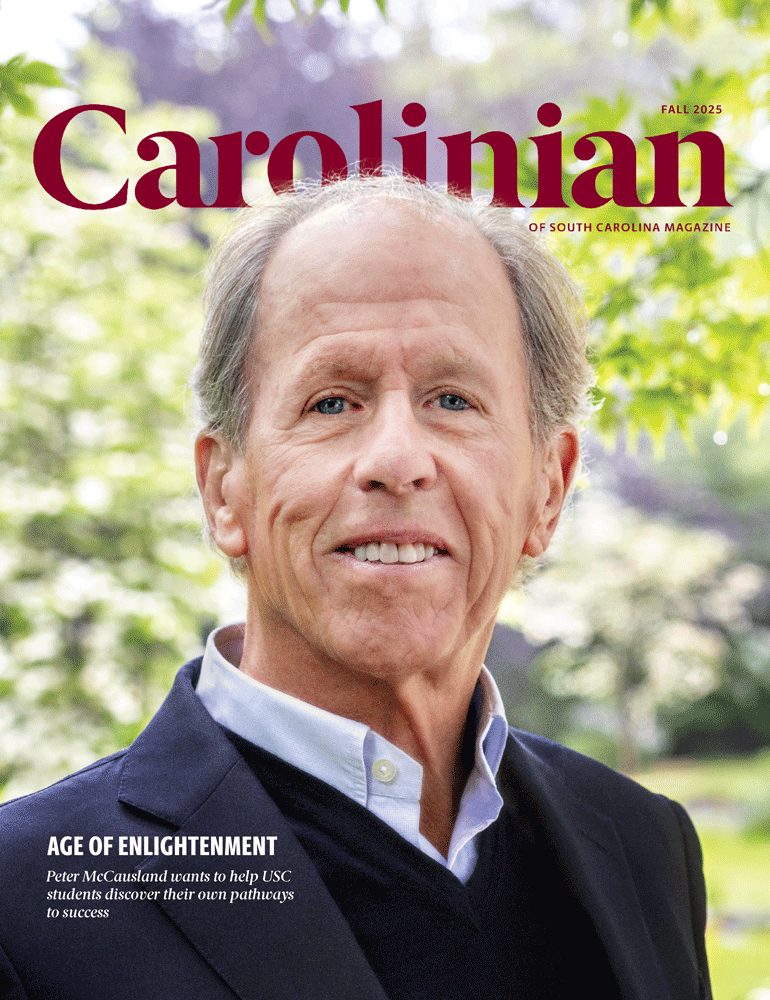Sarah Barker wants you to pay attention — not to her but to your body, to every limb and ligament. The body, she likes to say, isn’t merely a collection of arms, legs, eyes, ears and organs — it’s all one with the mind and brain.
This meta approach to the mind-body connection was the guiding light of Barker’s decades-long career as a theater professor. It still is in retirement, and the professor emerita will be the first to tell you it’s good for everyone, not just actors.
“Your life is full of traps to make you forget your body, and when you forget your body and move unconsciously through your life, pain has a great way of getting in,” says Barker, who retired from the University of South Carolina in 2019.
“You’ll have all these strains and anxieties, all of the psychological stuff that comes from not being in your body. But if you begin to tune in, there’s a calmness that comes with it, and you might even be a little happier.”
Barker wasn’t thinking about mind-body connections at age 12 when she attended theater camp for the first time. She was simply enthralled with the magic of the stage, of being part of a story that comes to life in front of an audience. She majored in theater at Southern Methodist University and had an epiphany her sophomore year.
“The theater department had this visionary acting teacher named Jack Clay who created a summer intensive course for movement,” she says. “It was a flourishing time for physical training for actors, and we studied the Grotowski Method, Asian approaches to movement and the Alexander Technique, which he helped to introduce in this country.”
F.M. Alexander was an Australian actor who specialized in evening-long recitations. He developed what came to be known as the Alexander Technique while recovering from severe laryngitis and then began sharing it with others. John Dewey, George Bernard Shaw and Aldous Huxley were among the luminaries of their time who became devotees.
“He started his own journey of figuring it out and discovered what we now call the Alexander Technique,” Barker says. “Basically, you can use your conscious awareness and thought to change your coordination, so everything in your body — your breathing, your throat muscles, your balance — everything is coordinated better. If you can learn to insert that into your life, life is easier.”
Barker began studying it in earnest in 1972, the year she earned a BFA in acting. Two years later, while earning an MFA from Southern Methodist, she became a certified Alexander Technique instructor under the tutelage of Marjorie Barstow, a dancer and track athlete at the University of Nebraska who trained with Alexander in the 1930s.
That fall, Barker got her first gig as a theater faculty member, teaching Alexander Technique and movement to budding actors at Prescott College in Arizona. Later, she taught theater movement at Webster University in St. Louis and the University of Pittsburgh, where she was head of the MFA acting program. Her book, The Alexander Technique: The Revolutionary Way to Use Your Body for Total Energy (Bantam), was published in 1978.
“Basically, you can use your conscious awareness and thought to change your coordination, so everything in your body — your breathing, your throat muscles, your balance — everything is coordinated better. If you can learn to insert that into your life, life is easier.”
But she spent most of her career in the theater department at USC. For 21 years she taught undergraduate and graduate theater students at USC, specializing in movement instruction. She also performed in USC Theatre productions and was a movement coach in many more.
“I love teaching. That’s when I really come alive,” Barker says. “When you’re teaching the Alexander Technique, you see a person transform and their eyes brighten. For a graduate student, it’s miraculous because they can go from being a pretty good actor to being a compelling actor.”
As she explains, rethinking the relationship between the mind, the body and the creative act can be a liberating experience for the artist.
“If you’re a violinist, what you imagine in the sound, in what you’re playing, is going to affect the way your fingers work, the way you send the music through the instrument. The actor’s instrument is their body voice, so they’re imagining human experience running through themselves,” she says. “If you’re a bag of muscle tensions and muscle blocks and restricted movement, that imagination can’t soar.”
It can also help people facing more serious problems, she says. Nearly 10 years ago, a skateboarder collided with Barker on campus, and she ended up in the hospital with a life-threatening brain injury. Facing a long recovery, she applied the principles of the Alexander Technique in her rehabilitation. More recently, she turned to the technique when she broke a hip and a wrist.
“After decades of having no injuries, these incidents have all been opportunities for me to investigate — how do you interact with the body damaged and the brain damaged and your body compensating for pain?” she says. “Look what happens when I get a little twinge of pain. My shoulder goes up to my ear and now my shoulder hurts.”
Prior to retirement, Barker created an array of teaching tools, including an hour-long DVD titled Moving with Ease, produced with assistance from USC’s Technology Services. More recently, she launched a mobile app, Allez Up!, which uses videos and short audio readings to help users integrate the Alexander Technique into daily life.
Then there is her YouTube series, which demonstrates everyday applications of the technique through titles such as “How to caulk your bathtub while using the Alexander Technique” and “How to harvest crowder peas using the Alexander Technique.” Office workers might want to check out “How to sit at your computer desk using the Alexander Technique.”
The Alexander Technique, in other words, can be applied to all aspects of life. But after 50 years of teaching, Barker is still most excited by the Alexander Technique’s application in the performing arts.
“What I have focused on is the mind-body connection as it empowers an artist — whether it’s acting or music or any kind of performance,” she says. “Every artist needs an immediate, intimate connection to their imagination, and that connection comes through the body.”

